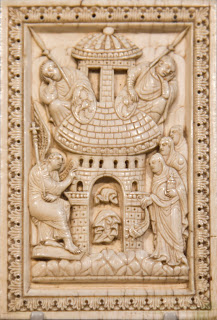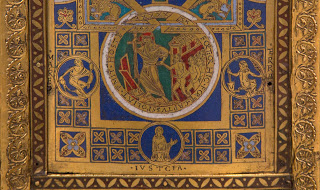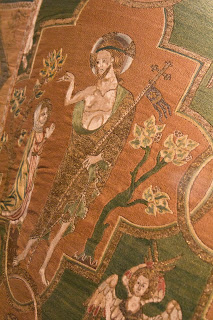

| Visitors Now: | |
| Total Visits: | |
| Total Stories: |

| Story Views | |
| Now: | |
| Last Hour: | |
| Last 24 Hours: | |
| Total: | |
The Resurrection in Medieval Art
The first is an ivory plaque which shows the Women at the Empty Tomb on Easter morning. The tomb is clearly a round structure, thus referencing the Anastasis rotunda built by Constantinople in Jerusalem. The ivory was carved c.900-950 in the famed Benedictine monastery of St Gallen, and it was probably used to adorn a the cover of an Evangeliary.
The second is an enamelled depiction of the Harrowing of Hell. Made c.1150 in Cologne (it is thought), this is a detail from a small portable triptych which may once have framed a reliquary. The inscription, which exemplifies the classical theology of Holy Saturday, is translated as: “This Stronger One despoils the captives of the Strong One and he treads the Enemy underfoot”. Hence the risen Christ is shown as Victor over death, trampling down Satan and having broken the doors of the Underworld, and leading forth Adam and the other righteous ones.
Finally, the third is a detail from the so-called Syon Cope, which was once owned by the Bridgettine nuns of Syon in Middlesex. The vestment is made of linen, entirely embroidered with Italian silk and metal threads. A unique example of the highly-valued opus Anglicanum, this photo is a detail of the embroidered scene depicting the Appearance of the Risen Christ to St Mary Magdalene. The vestment was originally a conical chasuble, made c.1300-20, and it was later cut open to form a cope. This nicely shows the relationship between the chasuble as a conical vestment, which, when sliced open, forms a semi-circular cope. More information about the Syon Cope, including a photo of it laid open can be seen here.
Read more at New Liturgical Movement
Source:





